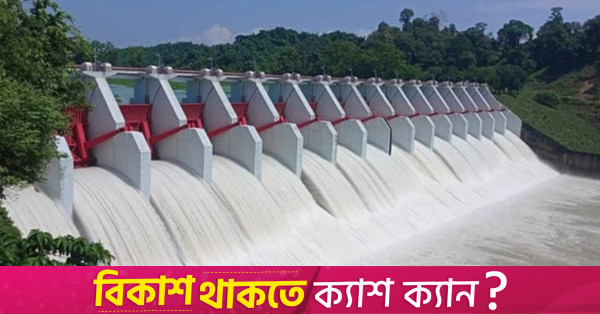Kaptai dam to release water at 10:00pm tonight, minimal impact expected


Authorities have urged people not to panic over the release of the water as this is not expected to affect the water levels of the Karnaphuli River or the low-lying areas
Kaptai Hydropower Plant. Photo: UNB
“>
Kaptai Hydropower Plant. Photo: UNB
Authorities have decided to release surging water in the Kaptai Lake by opening 16 spillway gates of the Karnaphuli Hydropower Station by six inches at 10:00pm tonight (24 August).
However, authorities have urged people not to panic over the release of the water as this is not expected to affect the water levels of the Karnaphuli River or the low-lying areas. However, the water level in Halda River might see minimal impact.
“The 16 spillway gates can be opened up to a maximum of 26 feet. If the gates are open six inches, 9,000 cubic feet of water will be released per second,” Milad Hossain, deputy government engineer of the civil maintenance department of the power plant, told The Business Standard.
“Due to heavy rainfall in the last few days and the downpour from uphills, the water in the Kaptai Lake in Rangamati has risen to near its maximum capacity,” said ATM Abduzzah, managing engineer of the Karnaphuli Hydropower Station.
As of 3 pm today, the water level in Kaptai Lake was recorded at 107.66 MSL (mean sea level) while the lake’s maximum water capacity is 109 MSL. At 10pm, all the 16 spillway gates will be opened six inches for releasing the additional water,” he said.
The artificial Kaptai Lake was created in 1962 by constructing a dam in Kaptai upazila of Rangamati, some 50 km from Chattogram city.
According to media reports, an area of 655 square kilometres was flooded due to the dam instalment and about 1,00,000 people were displaced. At that time, this lake, which had a catchment area of 4,250 square miles, served as a reservoir for power generation. Apart from the rains, the slopes of the Lusai hills in India are located on the surface of the lake and water flows into the lake even if it rains there.
Turning the turbines of the hydropower plant, the water is discharged into the estuaries of Halda and Karnaphuli rivers.
The hydropower station has a total of five units with 230 MW power generating capacity. At present, all the units are operational but the maximum power generation is 219 MW.
The depth of the Kaptai dam is 127 feet. During the rainy season, water is stored in the reservoir up to a maximum of 109 feet. When the water level reaches 108 MSL, it is released through the spillway discharge.




